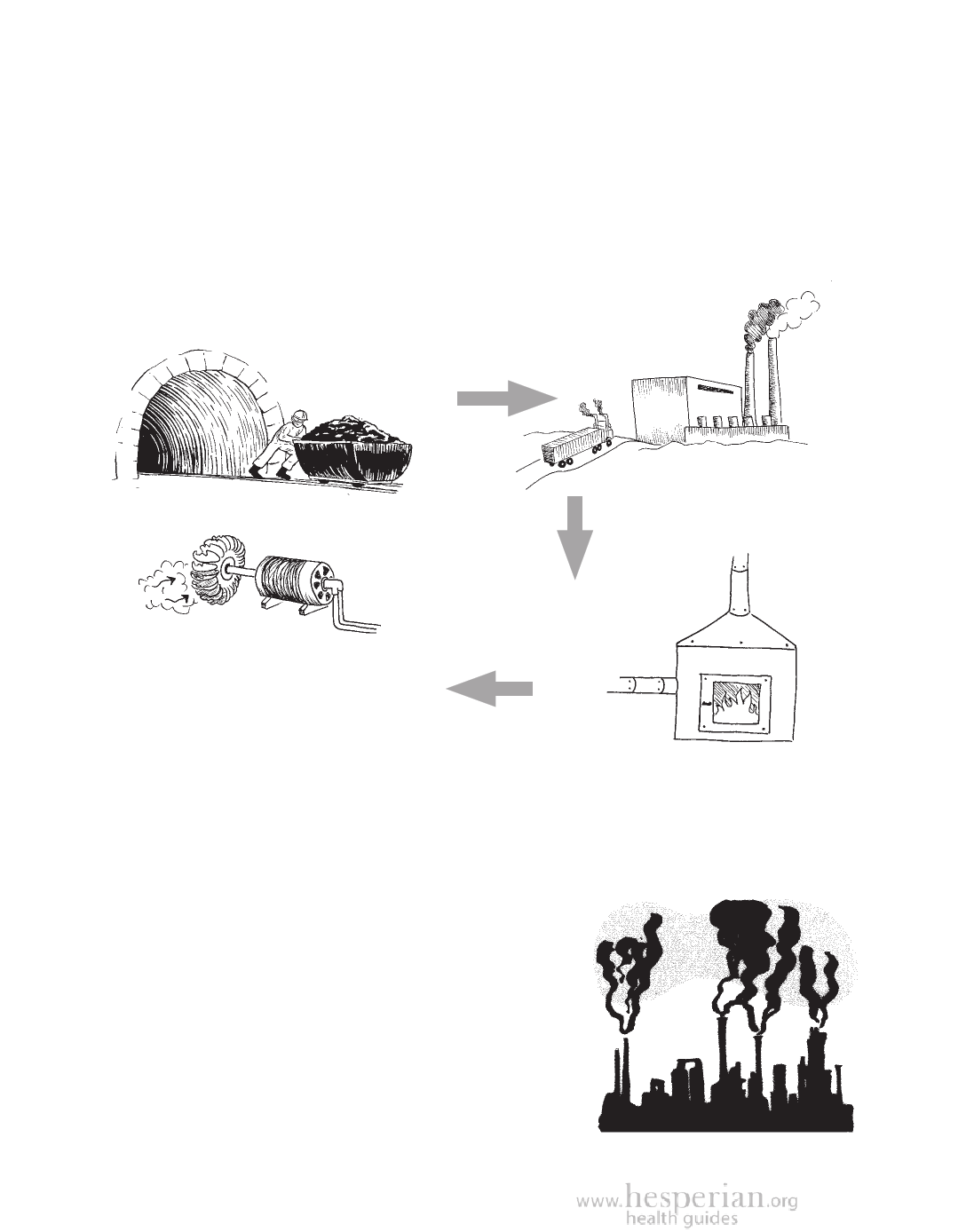
526 Clean Energy
How Electricity Is Produced
Most electricity today is made by burning fossil fuels (oil, coal, and natural
gas). Some energy also comes from nuclear power, and from large dams (see
page 170). To understand why we need clean energy to replace fossil fuels,
nuclear power, and energy from large dams, it helps to understand how
electricity is made and how it causes harm if it comes from sources that are
not clean or renewable.
Coal is dug
from the ground.
The coal goes to
a power plant.
The steam turns a machine called a turbine,
which makes an electric current (but the
toxic smoke is just released into the air).
The power plant
burns the coal to heat
water to make steam
(and toxic smoke).
Whether from coal, oil, or natural gas and nuclear power, making electricity
is all done the same way. First the power source makes heat, which is
used to make steam, which turns large turbines to make electricity. Large
hydroelectric dams use falling water, rather than steam heat, to turn a turbine
to make electricity. But all of these kinds of energy lead to toxic pollution,
destruction of communities and watersheds, and many serious health problems.
None are healthy or sustainable, especially when
they are used on a very large scale.
Fossil fuels are growing scarce and becoming
more expensive to find. Fossil fuels are nonrenewable,
meaning that once they are used up, systems based
on them will literally run out of fuel. At the same
time, the danger of global warming (see page 33)
and pollution from burning fossil fuels has grown to
become a serious environmental health problem for
every single person and place in the world.
A Community Guide to Environmental Health 2012